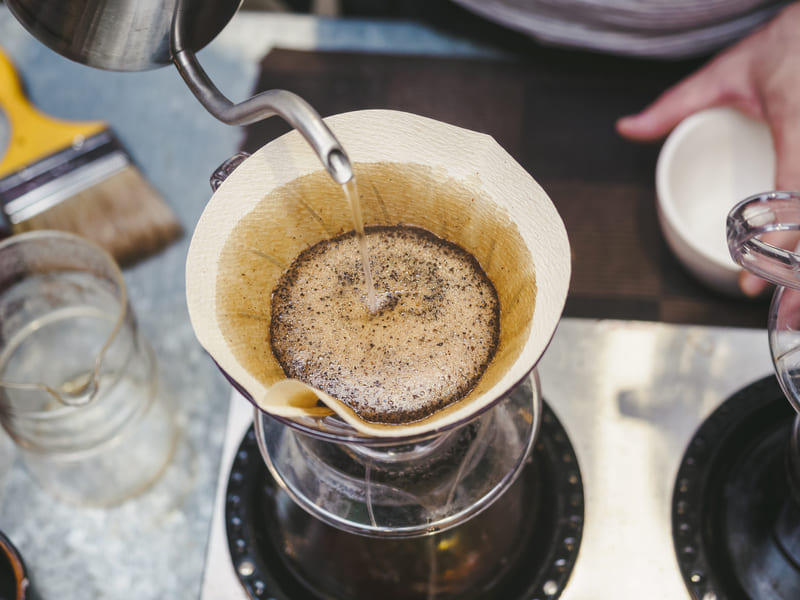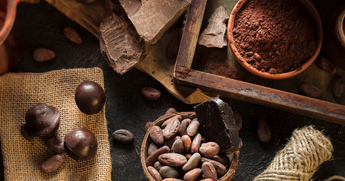Filter coffee is, and likely always will be, one of the most popular methods of creating delectable morning brews. In this quick read we will explore a range of topics related to filter coffee, including the origin of various beans, brewing methods, flavour profiles, and sustainability in the coffee industry. There are many unique ways to get your coffee fix, and filter coffee is easily one of the most versatile choices on the market.
If you are looking for some of the finest filter coffees, high-quality capsules, cleaning solutions, and more, Coffee Capsules Direct has something to suit every preference. With free shipping on orders over R700 and fantastic bulk specials running year-round, we are the obvious choice for all of your coffee-related needs.
Filter Coffee: A Brief Overview
If you consider yourself a coffee lover, it’s possible that you might already have a basic understanding of how a coffee’s origin can affect the quality and taste of a particular roast. However, there are a few other reasons why it makes sense to have a basic knowledge of where your brews come from.
When you can accurately trace the origins of a coffee, it becomes easier to ensure that you are purchasing your roasts from a reliable source. By this, we mean that the farmers are taking the utmost care to create the best product possible, but also that they are being paid properly and looked after accordingly.
With the brands we stock in our online store, you can quite easily trace your morning brew back to the exact farm where the beans were grown. This helps to facilitate a sustainable coffee economy, in which everyone is being treated fairly and the ultimate goal is to create the best quality coffee to satisfy the billions of daily consumers. To add to this, isn’t it intriguing to think about the journey your filter coffee went on before it eventually landed in your cup?
The majority of the coffee created worldwide comes from the Coffee Belt, which is a region that extends around the globe, encompassing more than 50 countries in Latin America, Asia, and Africa. This “belt” happens to have the ideal soil, climate, and altitude which allows for optimal coffee growing conditions.
How Does Origin Affect The Flavour Of Coffee?
As we touched on earlier, the location in which the beans are grown can have a major impact on the overall taste of coffee. So, let’s get into the differences between brews from different parts of the globe. Of course, there are many exceptions and the farmers themselves can have a large impact on the product they produce. With that in mind, allow us to walk you through some of the defining characteristics of coffee hailing from three different continents:
1. Latin American Coffee
The majority of all of the coffee beans grown in the world are from Latin America – in fact, Brazil alone is responsible for a whopping 30% of all coffee bean production. The soil, climate, and higher altitudes over most of the continent is ideal for coffee bean growth, and this is why you will notice that most of the blends you see in stores or on our online shop originate from Latin America. These beans are enjoyed by coffee lovers from across the globe due to the remarkably well-rounded flavour profile.
Here are a few common characteristics of roasts from this region:
- Low Acidity
- Nutty undertones that complement the roasts
- Generally, you can expect to find light or medium roast coffees from Latin America

2. Asian Coffee
Asia, despite having the largest land mass of all of the continents, can only support coffee beans in a few specific areas, mostly in Southeastern Asia. After Brazil, Vietnam and Indonesia produce the most coffee worldwide – however, fantastic roasts are also grown in Thailand, Laos, Papua New Guinea, and the Philippines too. Brews from these regions are distinctly bold and often feature unique flavours that you simply won't find from beans created elsewhere.
Here are a few more ways to describe Asian roasts:
- Slightly acidic, but not harsh on the palate
- Deliciously earthy
- Usually always dark roast
3. African Coffee
African coffee is highly sought-after worldwide and is well-renowned for its interesting and tasty flavours. African roasts account for around 12% of the global production, with the majority of the growing being done in Ethiopia and Uganda. Interestingly, it is thought that coffee was first discovered by a goat herder named Kaldi on the Ethiopian plateau – so, as you can imagine, African coffee has a long and storied history.
Traditional African blends usually display the following traits:
- Medium acidity, which generally makes these roasts slightly more acidic than those grown in Asia
- African brews often feature a slightly sweet, syrupy undertone which ensures that the acidity isn’t overwhelming
- Most African coffees are medium to dark roast
A Few Suggestions From Our Online Store
Now that we have covered the origin of certain coffees and touched on sustainability in the coffee industry, let’s get into some excellent products from our Coffee Capsules Direct online store.
1. Importers Italian Filter Coffee – 250g
Those who have tried brews from Importers Global Coffee will already know how dazzling their intense flavours can be. This artisan Arabica coffee is no exception, it features delectable aromas with subtle hints of dark chocolate. If you are a fan of strong coffee, this should be right up your alley, with a 5/5 strength rating and full-bodied roast, one cup of the Importers Italian filter coffee should be the perfect start to your day.
2. Terbodore The Great Dane Filter Coffee – 250g
Terbodore is constantly pushing the boundaries and trying to discover new, innovative flavours, scents, and subtle notes. The Great Dane Filter Coffee is made up of 100% Arabica sourced from Brazil, Indonesia, and Ethiopia, ultimately leaving you with the best characteristics of the hand-picked beans from three different continents. If you weren’t already convinced, Terbodore is a proudly South African company and they have done plenty to advance the South African coffee industry.
Filter Coffee: A Brief Look At Some Brewing Methods
For a short while, when espresso machines came into the mainstream, filter coffee fell out of favour with the coffee-loving world. Luckily, with the renewed interest in local roasters and single-origin artisan coffees, it’s safe to say that filter brews have made a resurgence! For those who don’t know, filter coffee is usually made with ground beans that are left to stew for a while – this allows filter coffee to excel at bringing out the subtle qualities of the beans.
Let’s delve into a few of the most commonly used brewing methods:
Pour Over
The name of this method happens to be quite self-explanatory, as it involves slowly pouring water over coffee grounds which are piled on top of a paper filter. The water is gradually drawn through the grounds and filtered through the paper, which leaves you with a brew that is entirely free of sediment.
One of the biggest appeals of this brewing method is that, because it uses much less pressure than an espresso machine, it is substantially gentler on the coffee – leaving you with a delicate, complex flavour profile. This is especially noticeable when pouring over brews with sweet undertones, as it allows these notes the time they need to come to the forefront.
Moka Pot
Many of you may recognise the Moka Pot from camping trips with your family, as it happens to be the ideal choice for making coffee over a flame. With that being said, a Moka Pot is capable of creating delectable brews, when used correctly. The larger the Moka Pot, the longer the extraction time will be.
These nifty tools operate using the physics of pressure, meaning when the water is heated in the base section of the pot, the internal pressure builds until it is eventually forced up through the pipe into the middle chamber. Avoid using larger grinds when brewing with a bigger Moka Pot, as this can quite easily result in over-extraction – a useful piece of advice to help you get the most out of this excellent filter coffee brewing method.

French Press
Also known as a plunge pot, this method is still one of the simplest ways of making coffee at home. Perhaps the largest advantage of a French Press is that you have full control over extraction time, allowing you to draw more flavour from the roast.
We recommend using a grind size which is a little coarser than those you might use for a pour over, otherwise, you may end up with grounds in your cup. Ideally, once you have poured a small percentage of water and bloomed the blend for around 30 seconds, leave it to brew for around 4 minutes in order to get the most flavour into your morning drink.
AeroPress
If you have spent a good amount of time in artisanal coffee shops, you have likely noticed the baristas playing around with the variables of these devices, which look like large plastic syringes. They are comparatively inexpensive to buy, surprisingly simple to operate, and they offer impressive control over the entire brewing process.
Similar to the Moka Pot, the AeroPress utilises pressure brewing, but it combines elements of immersion as well. With one of these brewing devices, you are afforded plenty of versatility and the opportunity to achieve a range of flavour profiles, depending on how you decide to use it.
It can be used traditionally, which involves placing finely-ground coffee onto the filter paper, pouring hot water over it, and stirring for about ten seconds to ensure that there is no trapped air inside the device. The inverted method is slightly more akin to a French Press, as the coffee grounds sit at the bottom of the plunger as opposed to the filter on the top layer. The device is then flipped over which agitates the coffee inside, providing a tasty brew that is entirely free of trapped air.
















